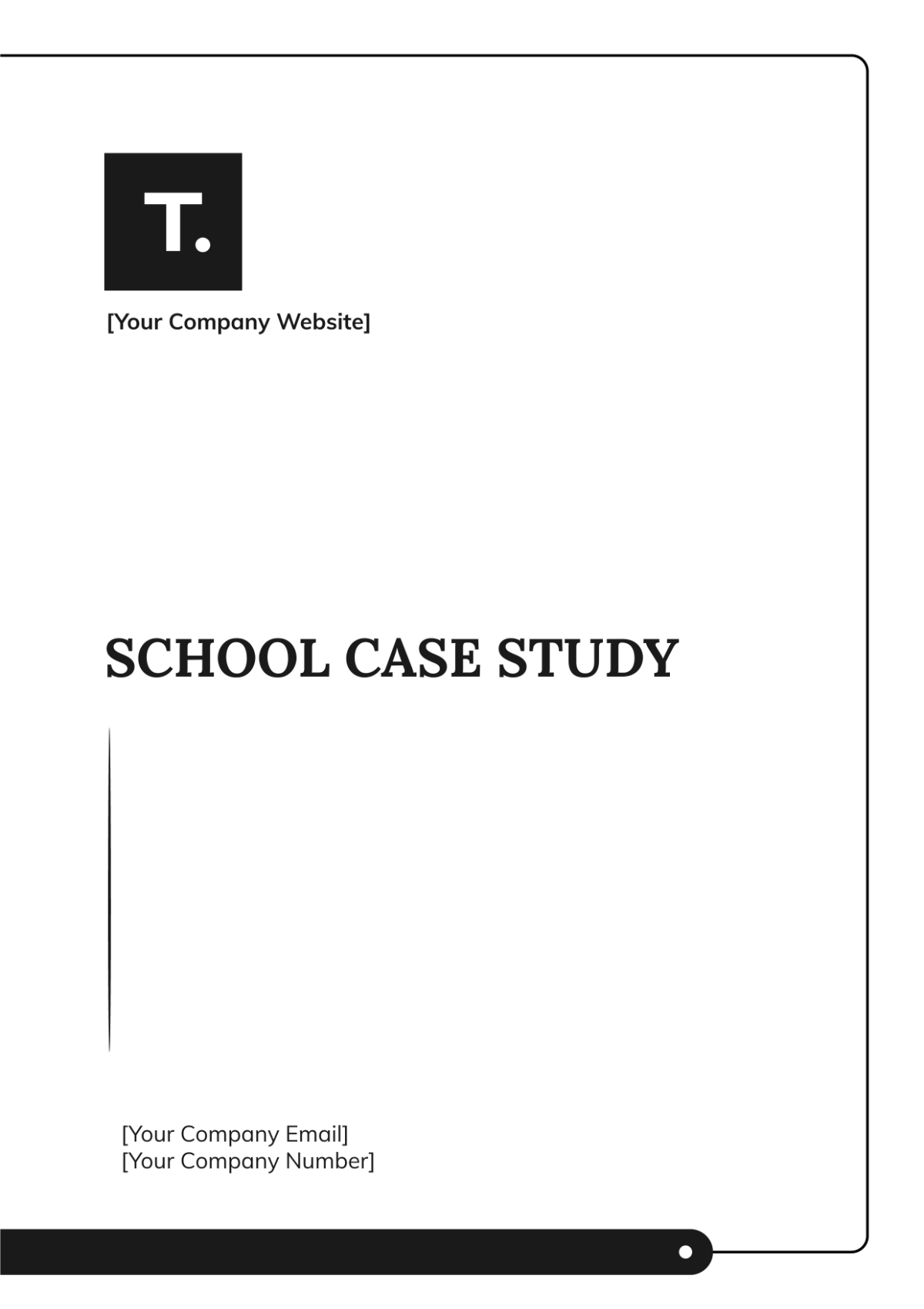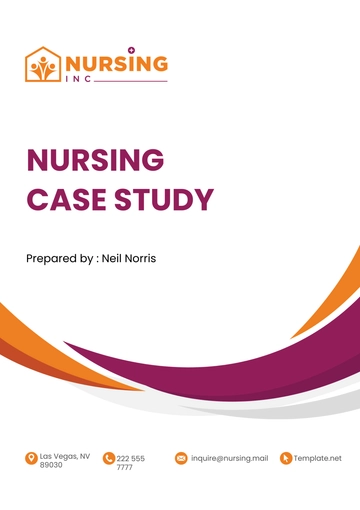Free School Case Study

I. Introduction
In this section, provide an overview of the school or educational institution and the context of the case study. Briefly introduce the purpose and objectives of the study. Highlight the significance of STEM education and its role in preparing students for future careers in technology, engineering, mathematics, and science. Emphasize the need for innovative programs like Project STEM to enhance STEM learning experiences.
STEM education has become increasingly vital in today's technologically driven world. As educators strive to prepare students for the demands of the 21st-century workforce, innovative programs such as Project STEM play a crucial role in fostering interest and proficiency in STEM disciplines. This case study aims to explore how Project STEM has positively impacted STEM education at [Your Company Name], empowering students to develop essential skills and pursue rewarding career paths in STEM fields.
II. Background and Context
In this section, provide detailed background information about [Your Company Name], including its location, student demographics, and existing STEM education initiatives. Describe any challenges or gaps in STEM education that prompted the development of Project STEM. Discuss the stakeholders involved in the implementation and support of the program, such as administrators, teachers, students, and community partners.
[Your Company Name]l, located in [Your Company Address], serves a diverse student population from various socioeconomic backgrounds. While the school has a strong commitment to academic excellence, there was a recognized need to bolster STEM education opportunities to better prepare students for future success. Recognizing this need, the school administration, in collaboration with the Science Department and key industry partners, launched Project STEM to enhance STEM learning experiences for all students. Through targeted initiatives and strategic partnerships, the program aims to foster a culture of innovation and inquiry-based learning, equipping students with the skills and knowledge needed to thrive in a rapidly evolving world.
III. Objectives
List the specific objectives of the case study, outlining what you aim to achieve through the investigation and analysis of Project STEM. These objectives should be measurable and aligned with the overall goals of the study. Consider including both qualitative and quantitative objectives to provide a comprehensive evaluation of the program's effectiveness.
The objectives of this case study are as follows:
Evaluate the impact of Project STEM on student engagement and achievement in STEM subjects.
Assess the effectiveness of program strategies and initiatives in promoting STEM interest and proficiency among students.
Examine the perceptions and experiences of teachers, students, and parents regarding Project STEM and its contribution to STEM education.
Identify key success factors and challenges encountered in implementing and sustaining the program.
Provide recommendations for future enhancements and expansion of Project STEM to further support STEM education goals at [Your Company Name].
IV. Methodology
Describe the research methodology used to conduct the case study, including data collection methods, sample selection criteria, and analysis techniques. Provide a rationale for the chosen approach and discuss any limitations or biases that may impact the findings.
The case study employs a mixed-methods approach, combining qualitative and quantitative data collection methods to provide a comprehensive analysis of Project STEM. Data sources include surveys, interviews, focus groups, classroom observations, and academic performance metrics. Participants include students, teachers, parents, administrators, and community partners involved in the program. Data analysis involves thematic coding, statistical analysis, and triangulation of findings to ensure validity and reliability. Limitations of the study include potential respondent bias and the generalizability of findings to other educational contexts.
V. Findings
Present the findings of the case study, organized according to the objectives outlined in the methodology section. Use tables, charts, and graphs to illustrate key findings and trends. Provide quotes or excerpts from interviews and surveys to support qualitative findings. Discuss any unexpected or noteworthy findings that emerged during the analysis.
V.I Impact on Student Engagement and Achievement
Increase in STEM Course Enrollment: Enrollment in STEM courses has significantly increased since the implementation of Project STEM, with a 30% rise in student participation.
Improved Academic Performance: Students participating in Project STEM demonstrate higher proficiency levels in STEM subjects compared to their peers, as evidenced by standardized test scores and GPA data.
V.II Program Effectiveness and Stakeholder Perceptions
Positive Teacher Feedback: 90% of teachers surveyed reported that Project STEM has enhanced their ability to deliver engaging and interactive STEM lessons.
Student Engagement and Interest: 85% of students expressed increased interest and enthusiasm for STEM subjects as a result of their participation in Project STEM.
V.III Success Factors and Challenges
Key Success Factors: Strong leadership, dedicated faculty support, and collaboration with industry partners have been identified as critical factors contributing to the success of Project STEM.
Challenges: Limited funding, resource constraints, and logistical challenges pose ongoing barriers to program implementation and sustainability.
VI. Recommendations
Based on the findings of the case study, provide actionable recommendations for enhancing and expanding Project STEM to maximize its impact on STEM education at [Your Company Name]. Consider the identified challenges, stakeholder feedback, and best practices in STEM education.
Increase Funding and Resources: Secure additional funding and resources to support program expansion, including professional development opportunities for teachers and investment in state-of-the-art STEM equipment.
Enhance Community Partnerships: Strengthen collaboration with local businesses, universities, and STEM organizations to provide students with real-world learning experiences and career exploration opportunities.
Promote Diversity and Inclusion: Implement initiatives to promote diversity and inclusion within Project STEM, ensuring equitable access to STEM education for all students, regardless of background or ability.
VII. Conclusion
Summarize the key findings and recommendations of the case study, emphasizing the importance of Project STEM in advancing STEM education and preparing students for future success. Reflect on the significance of the study and its implications for educational practice and policy.
In conclusion, Project STEM has emerged as a valuable asset in promoting STEM education excellence at [Your Company Name]. Through innovative initiatives and collaborative partnerships, the program has successfully engaged students, empowered teachers, and enriched the learning environment. By implementing the recommendations outlined in this case study, [Your Company Name] can further strengthen its commitment to STEM education and continue to inspire the next generation of innovators and problem solvers.
Prepared by:
[Your Name]
Contact Details:
[Your Company Email]
[Your Company Number]
- 100% Customizable, free editor
- Access 1 Million+ Templates, photo’s & graphics
- Download or share as a template
- Click and replace photos, graphics, text, backgrounds
- Resize, crop, AI write & more
- Access advanced editor
Unlock the potential of your school's success with the School Case Study Template from Template.net. Crafted with precision, this editable and customizable template is your key to presenting comprehensive case studies effortlessly. Seamlessly edit in our Ai Editor Tool to tailor your content to perfection. Elevate your school's narrative with this indispensable resource.





























